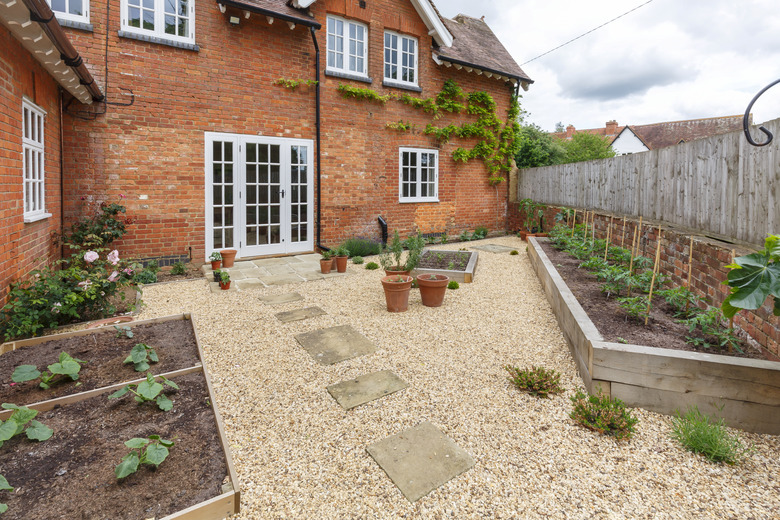How To Level Crushed Stone For A Patio
We may receive a commission on purchases made from links.
There are a few different methods for leveling a surface of crushed stone or gravel for a patio, whether the stone will become the surface material or a base layer for other paving materials. If the patio is small — 8 or 10 feet — you can simply tape a 4-foot level to the top edge of a straight 8- or 10-foot 2 by 4 and use it to check the surface for level as you grade (smooth and level) the stone. A more sophisticated technique is to set up level strings along the sides of the project area and use them to guide your grade work.
Things Needed
-
Hand maul or hammer
-
Line level
-
Tape measure
-
Crushed stone (as needed)
-
Plate compactor (as needed)
How to Level Crushed Stone for a Patio
1. Inserting Wood Stakes
Drive a wood stake precisely at each corner of the patio area, using a hammer or a hand maul (small sledgehammer). Tie one end of a mason's string (a braided nylon string used for masonry construction; available at any home center or lumber yard) to a stake on one corner of the patio. The string should be a few inches above the ground, but the height does not need to be precise.
2. Using Line Levels
Attach a line level, which is a small, plastic spirit level that hooks onto a string, to the string. Using the level as a guide, tie the string to the other corner stake on the same side of the patio so the string is perfectly level. Repeat the same process on the remaining three sides of the patio so that you have four level guide strings that are all even with one another. The strings should form a square or rectangle, as applicable.
3. Measuring the Distance of Stone Layer
Measure down from the strings to determine the distance between the strings and the desired height of the stone layer. You will use this dimension throughout the grading process to bring the layer to a uniform height.
4. Placing and Raking Stones
Add the stone and spread it out evenly with a rake. Starting in one corner of the patio, grade the stone with the rake until the surface is at the proper distance from the strings.
5. Driving and Grading the Stakes
Set up a temporary cross string to gauge the height of the stone in the interior of the patio: Tie a mason's string to two stakes and then drive the stakes outside the existing perimeter strings. Drive the stakes down until the cross string just touches the perimeter strings. Measure down from the cross string to gauge the stone's height as you grade.
6. Compacting the Stone
Move the cross string as needed to grade the rest of the stone layer. If necessary, compact the stone with a plate compactor or hand tamp. A plate compactor is a gas-powered tamping machine with a large metal plate as a base; these are commonly available for rent at equipment rental centers and home centers. A hand tamp is a simple hand tool with a wood handle attached to a square metal foot for tamping the ground by hand.
Tip
If your patio is next to your house, it should slope down and away from the house at a rate of 1/8 inch per linear foot. Grade for a slope by sloping the strings at the sides of the patio instead of making them level. The strings at the front and back of the patio will be level but at different heights.
